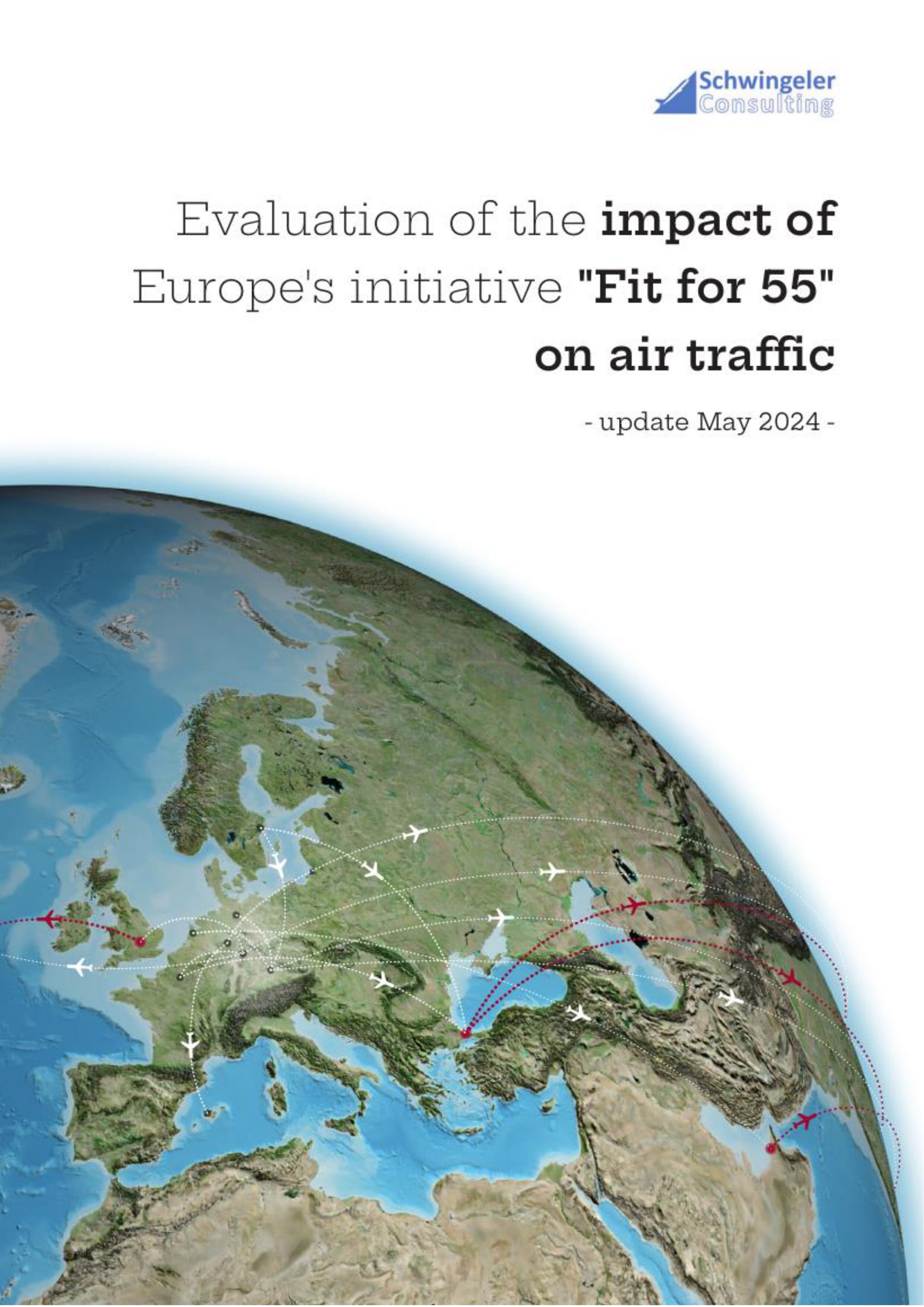Publications.
Select the desired topic or enter a search term.

May 2024 | Climate and environmental protection
Summary – Evaluation of the impact of Euope´s initiative “Fit for 55” on air traffic

May 2024 | Climate and environmental protection
Evaluation of the impact of Europe´s initiative “Fit for 55” on air traffic



